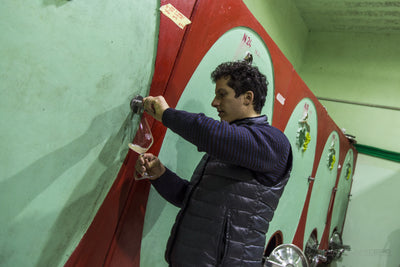The basic distinction of Old World and New World is between the antique wine regions of Europe (France, Italy, Spain, Portugal, Germany, Austria, etc) and the ‘modern’ wine regions that have emerged since in colonised countries such as North and South America, Australia and New Zealand. In the US and Australia it was really in the 1800s that things started cooking. South Africa started a bit earlier, in the late-1600s, with the Dutch Cape settlers. Chile has been making wine since the arrival of the Spanish conquistadors in the 1500s. But in all cases, the wine industries that have developed in New World countries began thanks to the knowledge and vine materials carried over from the Old World.
One thing to note about Old World/New World is that it is not an exact nomenclature. For a start, you’d be forgiven for thinking that there’s nothing particularly ‘new’ about a country that’s been producing wine for half a millennium, as in Chile’s case. By the same token, there is a certain amount of ambiguity over regions like Georgia (same for Turkey, China and several others), whose modern wine industry only came into existence in recent decades, yet which is thought to be the very cradle of wine, where domestic winemaking began more than 8,000 years ago. Georgia isn’t thought of as ‘New World’, but neither is it particularly referred to as ‘Old World. Such is life though.
In spite of the ambiguity, the Old World/New World distinction can be helpful in distinguishing between those countries whose winemaking history extends to ancient times (France being the archetype), and those who have piggybacked on the knowledge and traditions of Old World countries and applied it in a (in winegrowing terms) virgin land. In the US, for example, this happened with Franciscan fathers who planted vineyards in California (early Spanish settlers did plant vines before that, but that seemed to fizzle out); in Australia, it began with people like Gregory Blaxland and James Busby, the latter of whom brought over various vine cuttings from Europe which have enabled the spread of so many interesting European cultivars producing such good wine in Australia today.
Another point of difference concerns regulatory restrictions. Old World winemaking has developed slowly, by trial and error, over centuries or millennia, and thence become enshrined in wine law; although regional regulations exist in New World wine regions, such regions are rarely constrained to the extent of Old World ones. A classic example would the regulations on permitted grape varieties - in Burgundy, wine producers can only grow Pinot Noir, Chardonnay and Aligoté. Producers in many New World regions are free to grow what they want, where they want. Admittedly, this is changing, and New World wine regions are seeking to formalise winegrowing preferences that have developed over time.

Style
There’s a lot of talk about New World or Old World styles of wine, the sense of much of which tends to collapse the closer you scrutinise it. Having a basic understanding of what such labels imply can, however, be broadly helpful.
Very generally, ‘Old World’ implies a lighter style of wine with lower alcohol, higher acidity and a less intense fruit character, often with more floral aromatics. ‘New World’, by contrast, implies warmer climates, more intense fruit profiles, higher alcohol and often more pronounced oak character. It is also associated with modern, hi-tech winemaking (especially temperature control), which allows accurate manipulation of the wine to produce specific flavours, textures and styles. If someone hands you a Chardonnay and tells you it’s very ‘New Worldy’, it will probably have a fruit profile tending towards the tropical, and a fat, buttery, oaky richness to it. A Malbec from Mendoza in Argentina will have a much more intense, broad fruit character than a Malbec made in Cahors in France (this might be climate and terroir-derived or it might be through winemaking technique). Another classic comparison would be Sauvignon Blanc from the Loire Valley and the same grape from New Zealand. The latter will generally be shoutingly fruity; those from the Loire comparatively subtle, mineral, herbal. Descriptors such as ‘linear’, ‘mineral’, ‘savoury’, ‘earthy’ or ‘herbal are much more readily associated with Old World wines.
Now that you’ve learned about Old World and New World, our advice to you would be to file this knowledge away somewhere and pretty much to avoid the terms. The fact is that these days the world of wine is so diverse and complex that such distinctions are more liable to create confusion than clarity: Old World Producers make wines in New World styles using New World techniques; New World producers use vineyard and cellar techniques to make their wines less ripe and more restrained – more in an Old World style, in other words. Then there are the effects of climate change leading to ever riper grapes and higher alcohol levels in Ol World regions. In short, it’s all a big melting pot these days, and while ‘New/Old World’ will, in the absence of anything else, give you a reasonable steer on what to expect in terms of wine style, it’s better to try to find out about local growing regions or, better still, individual producers.

